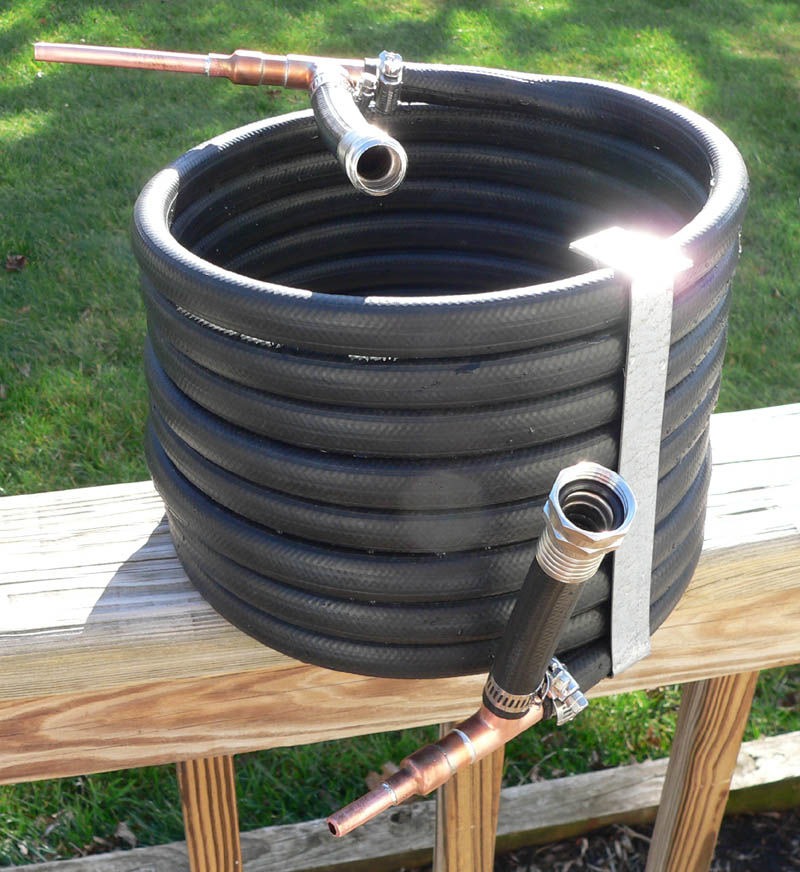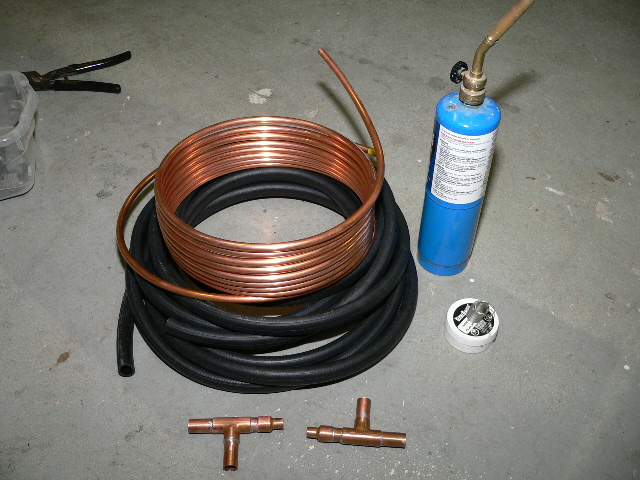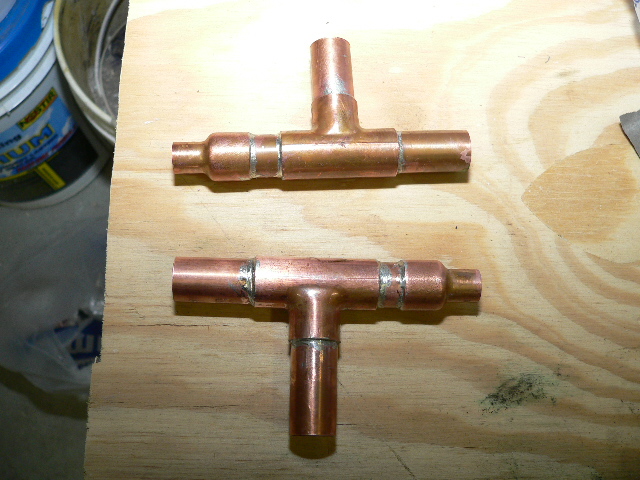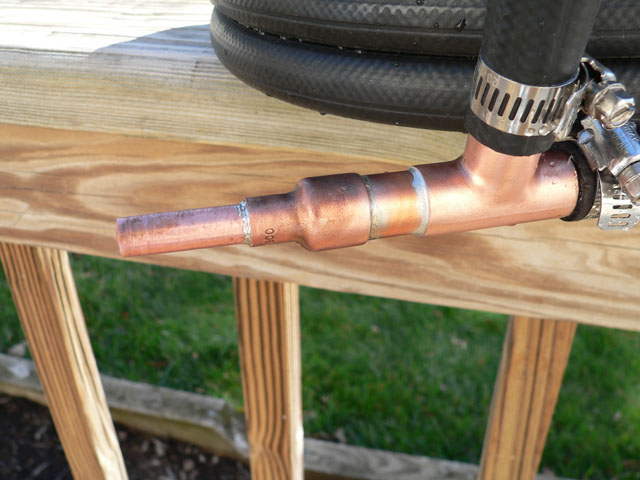In the past I would buy around 40lbs of ice every brew day to make an ice bath for my brew kettle to try and cool down the boiled wort. This process would usually take atleast an hour. Now I can chill my wort down to yeast pitching temperatures as fast as I can drain my boil kettle. Basically you have an inner tube (the 3/8 copper) surrounded by a rubber garden hose. The copper tubing carries the hot wort. The garden hose carries water straight from your hose bib coming out of your house. With the hot wort entering the chiller from the top and the cool tap water entering from the bottom the wort will always be in contact with cool tap water
Here's the guide that I used to construct mine:
This is the cheapest way to put a CFC together and doesn't use any pricy compression fittings. It requires soldering, but you ought to know how to do that already. No? Shame. Here's what we're building:

Part list:
- (1) 12" x 1/2" copper pipe
- (2) 1/2" copper TEEs
- (2) 1/2" x 1/4" copper reducers
- (1) 25' x 3/8" OD soft copper tubing
- (1) 25' x 5/8" ID rubber garden hose (make sure it's rubber. It will be the only one that does NOT say "do not use with hot water".)
- (4) hose clamps.

You'll also need some emery cloth (sandpaper), a round wire brush, flux, solder, tubing cutter, and a propane torch.
The first step is to create the end assemblies: Completely clean the 1/2" copper pipe by sanding it with emery cloth, then cut it into six 2-inch pieces with the tubing cutter. Clean the insides of the Tees and reducers with the round wire brush. Apply a liberal amount of flux paste and assemble to look like this:

Apply the propane flame and keep it moving but focus mostly on the Tee. Keep testing the temp by removing the flame and touching solder to the joint. If it doesn't flow, apply a little more heat. Don't overheat. You should see the solder being sucked into the joint. A solder joint does not seal due to an apparent bead on the outside of the fitting so don't build it up too much. Once it starts dripping out and falling on the floor, you have more than enough in the joint.
Before moving on, you must drill out the stops inside the reducer fittings with a 3/8" drill bit. There's a nub sticking out inside there that is meant to stop the 3/8 tubing from going all the way through the reducer. This is precisely what we WANT to happen.
The next thing you do is cut the last 10" off of each end of the garden hose. Unroll the soft copper tubing carefully into a straight line. Make up a very soapy solution of dish soap and water and pour it into the hose with a funnel. You can also lubricate with something like KY as long as it's water soluble. Don't try working the copper inside the hose without a lube, you'll only get it about 1/3rd of the way before you start cursing. You'll want to center the hose on the copper so that about 10" of copper sticks out on each end.
On one end, clean the lubricant off the copper and use the emery cloth to thoroughly clean the copper in prep for soldering. Apply flux to the copper and inside of the reducer on one of the end assemblies and slide it on. For this soldering job, you can slide the rubber hose out of the way, but take note of where the assembly has to sit first. Once you solder the reducer to the inner tubing, you can slide the rubber hose over the end assembly and clamp the hose on tightly.
You not have to select a cylindrical object to coil the hose around and I'd suggest going at least 12" in diameter. Start coiling from the end that you've just soldered. Coil it nice and tight as uniformly as possible. A lot of people use large tie wraps or electrical tape to hold the coil in position. I had some strips of galvanized metal on hand so I made rigid straps. Take your pick, but you'll want to secure the coil in some way to keep it from unraveling and looking like Shhhh...
You'll finish the project by cleaning the copper on the other end and soldering it on in the same way. Clamp the hose on first but in this case, you need to be careful not to burn the hose. Get a rag soaked in cold water and lay it over the hose to keep it cool.
Clamp the leftover hose ends to the Tees. The coolant water goes in on the end that you want to be the wort outflow (hence "counterflow").

Before you use it, boil a few gallons of water with about a quart of white vinegar and drain it all through the inside a few times, then run clean water through. Of course, you'll also need to sanitize just prior to use by running starsan through or recirculating hot wort through it if you have a pump (without the coolant water running obviously).
This is great, thanks
ReplyDelete